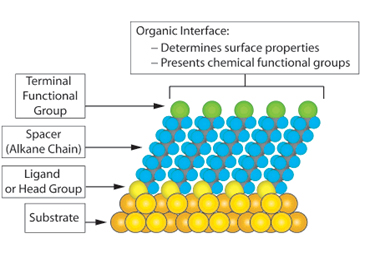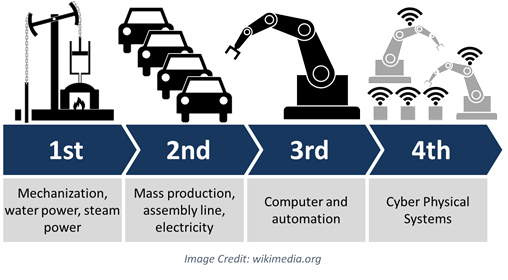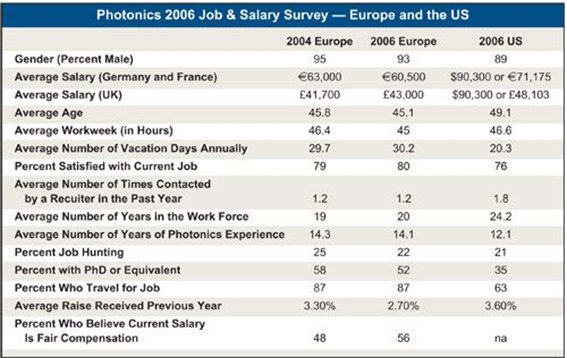- nCOVID-19 and Healthcare Technology
Since its first perceives in 1960s, enormous types of Corona virus are available in nature and in 2002 we witnessed the severity of Severe Acute Respiratory Syndrome CoV (SARS-CoV) that executed from southern China and affected world population severely. Later it tainted the Middle East areas as the Middle East Respiratory Syndrome CoV (MERS-CoV) that caused thousand people to die with an outstandingly high mortality rate of ~ 35%. In December 2019, it has returned in Wuhan, China, in mutated form of Novel Corona Virus and has spread over 180 countries and affected more than three million of world population till date with killing nearly three lakhs of people (Source: World Health Organization 2020) until this point of time. World Health Organization has declared this as ‘pandemic’ by the middle of March – 2020. The severity of the disease is increasing daily and the whole world is effectively under lockdown situation. To battle with this scenario, physicians are in frontiers and trying to provide their best to cure the diseased population. At one part the situation demands involvement of more doctors and healthcare person to combat with this unprecedented scenario, on the other hand, huge technological and scientific supports are required parallel for providing a curative measures. These include production of medicated masks, low cost ventilators, sanitizers, rapid diagnostic kits, life support equipment, medicines & more importantly vaccine.
The demand for medical physicists starts from here and as per the global scenario, within the next few years an estimated two crore job openings is expected, especially in the present era of COVID-19 healthcare and cancer treatment, particularly in coming technology of proton therapy.
- Importance of Medical Physics & Instrumentation
Medical Physics is a unique combination of Physics and Medicine; on more specific language, this is the application of Physics in Medicine and this subject can be considered as a lifeline to the human population when it comes to the diagnosis and treatment of several diseases. It’s important to understand that a Bio-Medical Scientist/Physicist has a very different role to a physician, but still one could be able to make a significant difference to the patients’ lives and that would be a big motivator for the person in this field. However, the Medical physicist/ Biomedical instrumentation job itself doesn’t involve as much day-to-day contact with patients, they aren’t laboratory-bound people. However, in hospital or research center, bio-medical physicists are at the forefront of patient care, and helping to save lives by ensuring the maintenance of high-tech sophisticated equipment used for the diagnosis & treatment of patients; actively contributing to the R&D of cutting-edge medical equipment development, innovation in treatment and medical procedures, that is incredibly rewarding and challenging as well.
- Skills Required for the Profession in Medical Physicist & Bio-Instrumentalist job
If someone has passion and fascination to work with some of the world’s most advanced & sophisticated machinery, who are interested to serve the mankind through their innovation, this is where one can really put the concept of Physics expertise to the test. The subject is multi-disciplinary in true sense, depending on the area of expertise, one can design specialized technology in radio-therapy for cancer treatment, may work with optical & laser technology to make surgery non-invasive as much as possible, may explore possibilities for the betterment of imaging modalities to detect disease at early stage, can do work in the field of prosthetics, implants and AI enabled Bio-telemetry, or even in developing image-guided surgery to treat disease and diagnose illnesses in patients.
Simply the technical know-how will not be enough when it comes to a career in bio-medical physics & instrumentation. Persons who are supposed to be in this field, have to work closely with healthcare professionals including doctors, radiologists on a daily basis, thus interpersonal and communication skills are vital and being able to demonstrate good leadership abilities. In nutshell following are the skills one need to have:
- a strong interest in the integration of medicine and applied physics (i.e. engineering)
- excellent communication skills in order to liaise with a variety of people
- spatial awareness, 3D conceptual ability and knowledge in computer handling (particularly for design engineers)
- the capacity to combine a high degree of technical knowledge with creativity
- the skill to design new products, efficient and practical, also cost effective and aesthetically attracting.
- Knowledge of market to estimate a product’s marketability
- Good problem-solving skills and the ability to work under pressure.
- Pre-Requisite Qualification
The prospective students who have got an undergraduate degree / are in the process of getting one, in the fields of physics, applied science, chemistry, life-science, pharmacy, engineering, or applied mathematics, are the ideal for enrolling in this medical physics & instrumentation post-graduate degree program. The program is conducted in collaboration with hospital / ISO certified diagnostic centres for the medical equipment / machinery training. To get excellence in this profession they must know a fair amount of physics, chemistry, biology, technology, medicine and engineering.
Apart from the basic knowledge of Anotomy, Physiology, Physical and Chemical sciences, the postgraduate program in Medical Physics & Instrumentation covers the following important core topics:
- Radiotherapy Equipment (treatment and imaging) and Quality Assurance
- Dosimetry
- Radiation Safety Measures
- Clinical and OT instruments
- Medical imaging
- Artificial Intelligence and Data Science
- IoHT and Bio-telemetry
- Bio-Medical sensors, Laser and MEMS/ NEMS
- Spectroscopy and imaging
- Bio-informatics
- Tissue Engineering
And many more…
As per the recent study, presently in developed counties 15-20 numbers of Medical Physicists are available and the number falls to 1-5 per million, in developing countries – this indicates the void of such specialised manpower in world scenario. Now-a-days Government has taken initiative to appoint at least one Medical Physicist in each hospitals/ healthcare sectors for the smooth running of multispecialty hospitals, high-tech equipment. Job opening is also there in teaching/research/health administration. A job in Medical Physics & Instrumentation means applying Physics & Engineering principles and techniques to the medical field. A successful career uses the skills of engineering to improve healthcare diagnosis and treatment. The field can be thought of as chemical, electrical, optics and optical, and/or mechanical engineering depending on the application. There are many jobs in Radiation Safety Officer, Bio-instrument engineering improving and using medical devices, which are healthcare products. There are some career opportunities with drug companies as well. In nutshell following are the job market:
- Hospital , Laboratories and Healthcare units
- Medical equipment manufacturing Unit / Industry
- University and National Research departments / Centres
- Other ( Public and Private) Research Units
- Rehabilitation or health charities.
- Heath –Administration
The responsibilities associated with the job vary depending on the employer and the seniority of the post one hold:
- To use mathematical design tool and software to design, develop and test new materials, devices and equipment. This includes programming electronics, building and evaluating prototypes, troubleshooting problems, and rethinking the design until it works correctly.
- To liaising with manufacturer and technical people to ensure the feasibility of a device / product in view of design and economic viability.
- To pursue research to solve clinical problems using different techniques to collate the necessary information.
- To work closely with doctors, healthcare people and therapists as well as with end-users (patients and patient parties)
- To discuss and solve problems with manufacturing, quality, purchasing and marketing departments
- To arrange for the clinical trials of medical products
- To approach marketing and other industry companies for product sell.
- To write reports and attending conferences and seminars to present latest development and latest designs to a range of technical and non-technical audiences
- To meet with health service people and managers to exchange findings
- To deal with technical queries from hospitals and doctors and to provide advice on new equipment
- To test and maintain clinical equipment
- To provide training to technical & clinical staffs
- To ensure bio and radiation safety-related incidents
- To keep up to date with new developments in the field, nationally and internationally.
Bhaba Atomic Research Centre (BARC) has a regulatory body for accreditation of Medical Physics / Radiation Physics courses in India. Selected Universities are offering this course in Master’s degree level now. Though in the eastern zone of India, the program is running in very few colleges/Universities. Only a few, including Adamas University, is presently conducting this multi-disciplinary program from 2018-’19 academic year and placement record is excellent. It offers a broad spectrum of career opportunities starting from radiation safety officer, clinical activities, quality assurance and research by including Machine learning / big data and AI within diagnostic radiology physics, radiation therapy physics, and nuclear medicine physics. Additionally the starting pay package is quite impressive. The associated faculty members of Adamas University are well qualified, mostly M.Tech. and PhD (Tech), for conducting this program. The state of the art laboratories, regular hands on training, industry internship program, special emphasis on Research & Development, have made this program attractive and job oriented for interested students. In addition to Adamas University program, CMC-Vellore, Manipal University, Punjab University, D Y Patil University and IIT Kharagpur are conducting two year postgraduate program in Medical Physics. In spite of offering the same M.Sc. program in Medical Physics, Adamas University program is bit different in the sense; they are offering the M.Sc. (Tech) program in Medical Physics and Instrumentation, keeping emphasis on instrument parts, so that the students could get trained in the instrument design, application and supervision.












